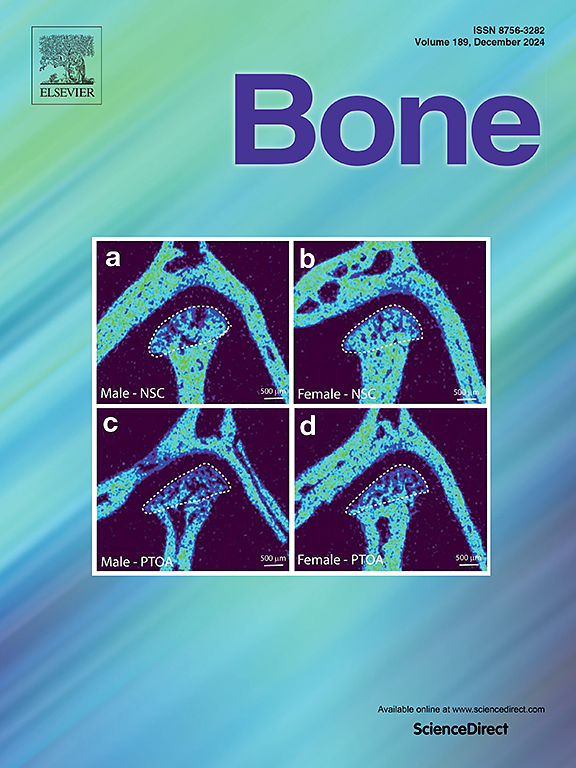Craniofacial fibrous dysplasia: A review of current literature
IF 3.5
2区 医学
Q2 ENDOCRINOLOGY & METABOLISM
引用次数: 0
Abstract
Introduction
Fibrous dysplasia (FD) is a rare genetic disease, in which normal bone is replaced by fibro-osseus tissue. Disease severity varies greatly from single monostotic lesions to widespread polyostotic disease. Craniofacial lesions are common and, due to the complex anatomy, can cause several disabling symptoms and local extra-skeletal complications. Since relatively rare, reported cases of craniofacial FD (CFD), specifically, are few and the appropriate management remains incompletely defined.
Methodology
We performed a systematic literature review following the PRISMA guidelines for articles considering CFD in the years 2010–2023. The search was conducted in the PubMed and OVID Medline libraries. Altogether 193 articles were retrieved and reviewed.
Results
Overall, the clinical presentation of CFD is highly variable depending on site and extent of lesion, with pain, deformity or impairment of function being most common. Diagnoses are often incidental and primarily based on CT imaging, while more extensive imaging, genetic studies and lesion biopsies are reserved for unclear cases. Asymptomatic patients are suitable for observation, while symptomatic or widespread disease may require more active approach with medical or surgical treatment. Follow-up is encouraged in all patients to observe possible lesion reactivation, late-stage complications and, though rarely, malignant transformation. Management should be individually tailored with a multidisciplinary team and wholesome consideration of individual needs.
Conclusions
This review provides an updated discussion on craniofacial FD with focus on improved understanding of disease pathophysiology, appropriate line of surgical management, and new potential means of medical treatment.
颅面纤维发育不良:当前文献综述。
简介:纤维性发育不良(FD)是一种罕见的遗传性疾病,患者的正常骨被纤维性骨组织所取代。疾病的严重程度差别很大,从单一的单一病变到广泛的多骨病变。颅面病变是常见的,由于复杂的解剖结构,可引起几种致残症状和局部骨骼外并发症。由于报道的颅面FD (CFD)病例相对罕见,特别是很少,适当的治疗仍然不完全明确。方法:我们按照PRISMA指南对2010-2023年间考虑CFD的文章进行了系统的文献综述。搜索是在PubMed和OVID Medline图书馆进行的。共检索和审查了193篇文章。结果:总体而言,CFD的临床表现随病变部位和程度的不同而变化很大,最常见的是疼痛、畸形或功能障碍。诊断通常是偶然的,主要基于CT成像,而更广泛的成像,遗传研究和病变活检是为不明确的病例保留的。无症状的患者适合观察,而有症状或广泛传播的疾病可能需要更积极的药物或手术治疗。鼓励对所有患者进行随访,观察可能的病变再激活、晚期并发症以及恶性转化(虽然很少)。管理应由一个多学科的团队和对个人需要的全面考虑量身定制。结论:这篇综述提供了关于颅面FD的最新讨论,重点是提高对疾病病理生理学的理解,适当的外科治疗方法,以及新的潜在医学治疗手段。
本文章由计算机程序翻译,如有差异,请以英文原文为准。
求助全文
约1分钟内获得全文
求助全文
来源期刊

Bone
医学-内分泌学与代谢
CiteScore
8.90
自引率
4.90%
发文量
264
审稿时长
30 days
期刊介绍:
BONE is an interdisciplinary forum for the rapid publication of original articles and reviews on basic, translational, and clinical aspects of bone and mineral metabolism. The Journal also encourages submissions related to interactions of bone with other organ systems, including cartilage, endocrine, muscle, fat, neural, vascular, gastrointestinal, hematopoietic, and immune systems. Particular attention is placed on the application of experimental studies to clinical practice.
 求助内容:
求助内容: 应助结果提醒方式:
应助结果提醒方式:


